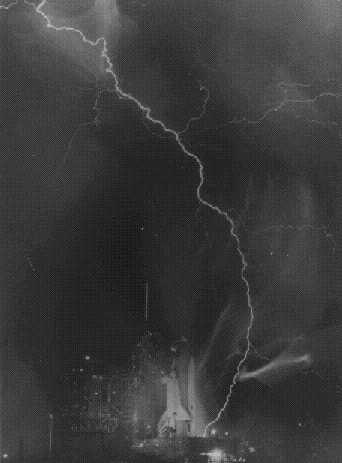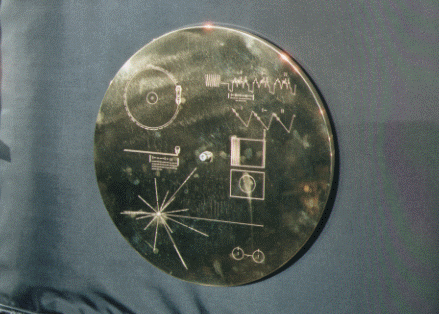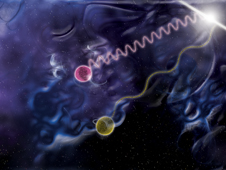Jupiter was king of the Gods. The eagle was his messenger. His weapon was the Thunderbolt (thunder and lightning). All other gods were terrified of him, although he was a little scared of his wife Juno! Jupiter, Neptune and Pluto were the three sons of Saturn. They divided up the world between themselves. Jupiter took the air, Neptune had the sea and Pluto ruled under the earth, the home of the Dead.
Jupiter means Father Jove (Father in Latin is "pater"). There was a big temple on the Capitol in Rome dedicated to Jupiter Optimus Maximus (which means Jupiter Best and Greatest). The Romans thought that Jupiter guarded their city and looked after them.
http://photojournal.jpl.nasa.gov/targetFamily/Jupiter?start=100
The Great Red Spot (upper right) is wide enough to swallow two Earths.
http://stardate.org/resources/gallery/gallery_detail.php?id=960#
Jovial Family

The 4 largest moons of Jupiter form a diverse family. Clockwise from top left: Ganymede, which is the largest moon in the solar system; Callisto, which is scarred with thousands of impact craters; Europa, which may have a global ocean beneath its icy crust; and Io, the most volcanically active body in the solar system. [NASA/JPL]
Saturn
Saturn was god of Time and his weapon was a scythe. He is called Old Father Time.
Saturn ruled the gods before Jupiter. Jupiter, Neptune and Pluto were his children. They represent Air, Water and Death, the three things that Time cannot kill.
The Romans had a mid-winter festival in honour of Saturn, called the Saturnalia. It lasted seven days, and there was much merrymaking. Public business was suspended and schools were closed. Parents gave toys to their children and there was a public banquet. That is why we eat so much at Christmas, give presents and go to parties.
11 Januari 2009:
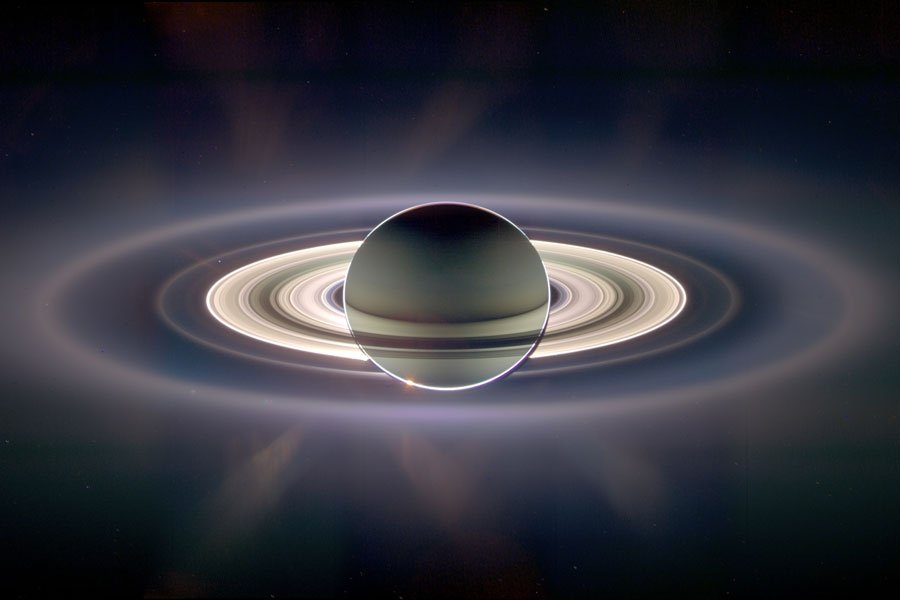
Explanation: In the shadow of Saturn, unexpected wonders appear. The robotic Cassini spacecraft now orbiting Saturn recently drifted in giant planet's shadow for about 12 hours and looked back toward the eclipsed Sun. Cassini saw a view unlike any other. First, the night side of Saturn is seen to be partly lit by light reflected from its own majestic ring system. Next, the rings themselves appear dark when silhouetted against Saturn, but quite bright when viewed away from Saturn, slightly scattering sunlight, in this exaggerated color image. Saturn's rings light up so much that new rings were discovered, although they are hard to see in the image. Seen in spectacular detail, however, is Saturn's E ring, the ring created by the newly discovered ice-fountains of the moon Enceladus and the outermost ring visible above. Far in the distance, at the left, just above the bright main rings, is the almost ignorable pale blue dot of Earth.

rings of Saturn in a very close up!


Saturns moon Enceladus on scale
Added 6th jan. 2010:
http://ciclops.org/view/5950/Spring_Unveils_Saturns_Hexagon?js=1

new details of a jet stream that follows a hexagon-shaped path, and much more of the Cassini mission
Uranus
Uranus was a shadowly figure right at the start of time. He came before Saturn, who came before Jupiter. He was not worshipped by the Romans, so there is no picture of him.
Uranus was the sky, and his wife Gaia was the earth. They had many children, including giants. They had a violent argument and split up. Ever since the earth and sky have been apart.
Uranium is a radio-active metal used for nuclear power. It was called after the planet Uranus, as it was discovered about the same time.
http://photojournal.jpl.nasa.gov/targetFamily/Uranus
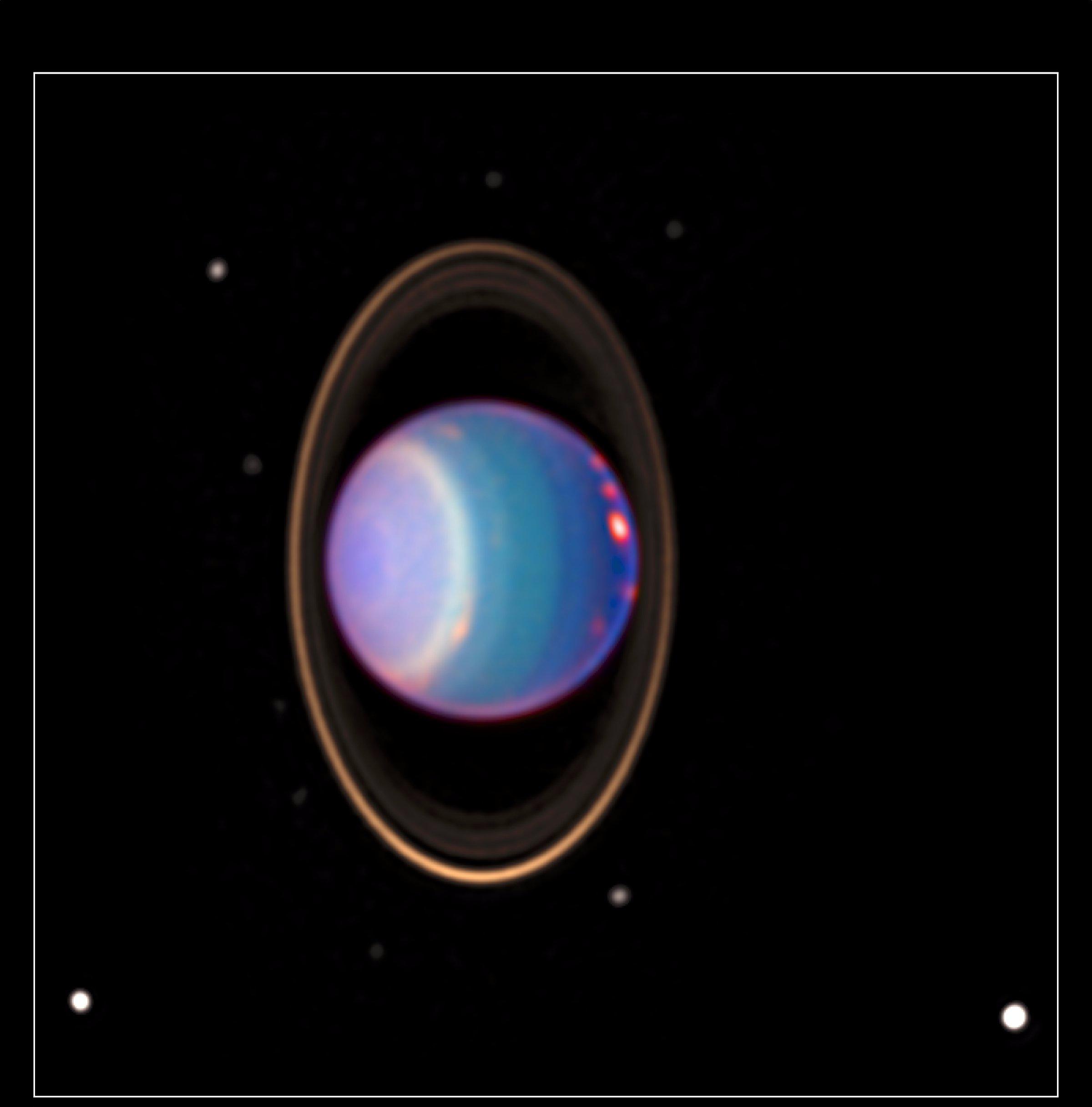
Neptune

Neptune was the god of the sea. He carried a trident, which had three prongs. He rode a dolphin or a horse. When the sea is rough enough to show white tops to the waves, these are called sea horses. On the right, the back half of the seahorse is a fish.


Pluto/Charon

Pluto was the god of the Dead. Romans were afraid to say Pluto's real name because they were afraid he might notice them and they would die.
A pair of small moons that NASA's Hubble Space Telescope discovered orbiting Pluto now have official names: Nix and Hydra. Photographed by Hubble in 2005, Nix and Hydra are roughly 5,000 times fainter than Pluto and are about two to three times farther from Pluto than its large moon, Charon, which was discovered in 1978.http://pluto.jhuapl.edu/index.php

New Horizons,NASA's Pluto-Kuiper Belt System mission
A must see: See those little men standing on Pluto/Charon!

http://pluto.jhuapl.edu/gallery/sciencePhotos/image.php?gallery_id=2&image_id=84

February 9th 2010: Latest image
Gamma Bursts, Quasars, Supernovae, Pulsars, Black Holes etc.
VIDEO:
A computer animation of a gamma-ray burst destroying a star. This blue Wolf-Rayet star -- containing about 10 solar masses worth of helium, oxygen and heavier elements -- has depleted its nuclear fuel. This has triggered a Type Ic supernova / gamma-ray burst event.
An artist's concept of the newly discovered pulsar. Clouds of charged particles move along the pulsar's magnetic field lines (blue) and create a lighthouse-like beam of gamma rays (purple).
June 21, 1995 :
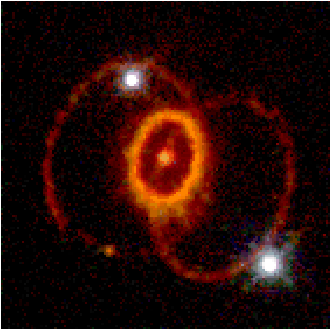
The Aftermath of the Great Supernova in 1987
Hubble Space Telescope
Explanation: Betelgeuse (sounds a lot like "beetle juice"), a red supergiant star about 600 light years distant, is seen in this Hubble Space Telescope image -- the first direct picture of the surface of a star other than the Sun. A bright, as yet unexplained hotspot is revealed on its surface! While Betelgeuse is cooler than the Sun, it is more massive and over 1000 times larger. If placed at the center of our Solar System, it would extend past the orbit of Jupiter. Betelgeuse is also known as Alpha Orionis, one of the brightest stars in the familar constellation of Orion, the Hunter. Like many star names, Betelgeuse is Arabic in origin. It is derived from a phrase which refers to the hunter's shoulder or armpit, the general area occupied by this star in drawings of the figure in the constellation. As a massive red supergiant, it is nearing the end of its life and will soon become a supernova.
http://antwrp.gsfc.nasa.gov/apod/ap970216.html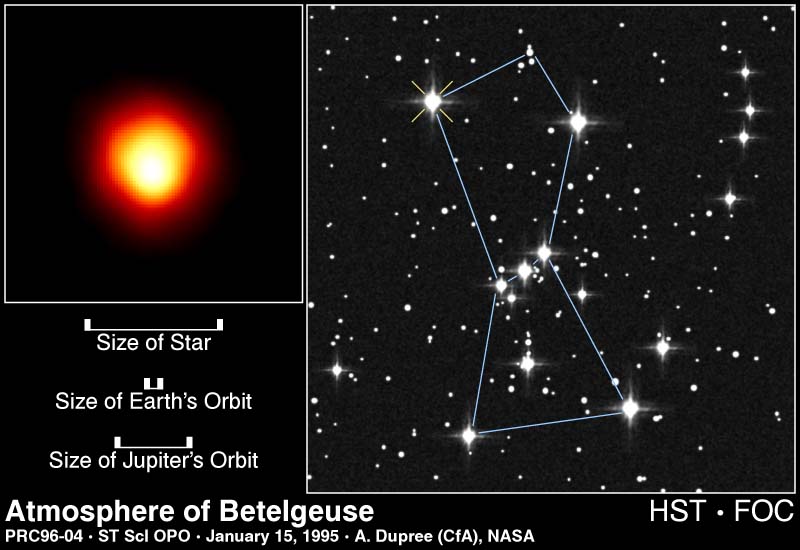
Fermi Science Topics
The mission will start with a one-year all-sky survey of gamma-ray sources, after which, a scheduled observing plan will be derived for guest observers who can apply for observation time through a formal selection process. Scheduled observations will be interrupted at times for special "targets of opportunity", i.e., spontaneous events that occur for which it would be in the best interest of the science to repoint the spacecraft immediately to obtain gamma-ray data of these targets. Some of things Fermi will study are:
Active Galactic Nuclei and Blazars

Distant galaxies, some of which are intense and highly variable flaring sources of high-energy gamma rays. AGN are powered by supermassive black holes with up to billions of times the Sun's mass. The gamma rays seen from some AGN arise from relativistic jets of material that are aimed in our direction. The image to the right is a Hubble Space Telescope optical image of M87's jet.
» Read More
Example: 3C279
Distance: 7 billion light-years
Size: central region 3 light-days across
Power: at flare maximum near 1,000,000,000,000 (trillion) times the power output of the Sun
Gamma-Ray Bursts

Intense flashes of gamma rays lasting from fractions of a second to hours, some with fading afterglows visible for months. Apparently associated with star forming regions in galaxies, these are among the most powerful explosions in the universe. The image to the right is an artist's conception of a gamma-ray burst.
» Read More
Example: GRB 990123
Distance: 10 billion light-years
Size: emitting region is light-seconds across
Power: at maximum up to 1,000,000,000,000,000,000 (quintillion) times the Sun's power
Pulsars

Rotating neutron stars with strong magnetic fields. Neutron stars are collapsed stellar cores with the density of an atomic nucleus (about 1 billion tons per cubic centimeter!) and are slightly more massive than the Sun. The image to the right is a Chandra Observatory X-ray image of the Crab Nebula pulsar.
» Read More
Example: The Crab Nebula Pulsar
Distance: 7,000 light-years
Size: 10 kilometer diameter neutron star rotating 30 times per second
Power: 75,000 times the power output of the Sun
Solar Flares

Intense energetic solar explosions which produce gamma rays and accelerate atomic particles. Solar flares are generated within the Sun's highly magnetic active regions and can bombard Earth with high-energy radiation. The image to the right is an X-ray image of the flaring Sun from the Yohkoh satellite.
» Read More
Example: Solar Flare 11 June 1991
Distance: 8 light-minutes
Size: solar active regions are several times the size of planet Earth
Power: a typical flare has one-tenth the power output of the entire quiet Sun
Unidentified Gamma-Ray Sources

Of the 271 gamma-ray sources detected by the EGRET instrument onboard the Compton Gamma-Ray Observatory, 172 are unidentified sources. Possible candidates for these sources include active galactic nuclei, pulsars, supernova remnants, dense molecular clouds, and stellar-mass black holes within our Galaxy. It is even quite possible that entirely new phenomena could account for some portion of these unidentified sources. Fermi will localize the positions of the unidentified sources accurately enough to make searches for counterparts at other wavelengths much more feasible. The image to the right is a Compton Observatory all sky gamma-ray image of the unidentified sources.
» Read More
Cosmology and Particle Astrophysics

There is strong evidence that matter that radiates across the entire electromagnetic spectrum is only 10% of the total mass of the universe. In other words, 90% of the mass of the universe does not emit light at any wavelength. Currently the only way to detect this so-called dark matter is by its gravitational effects on luminous matter. One theoretical candidate for what dark matter might be is a type of hypothetical particle called a weakly interacting massive particle, or WIMP. The theory that predicts the existence of WIMPS also predicts that they may annihilate one another, producing gamma rays. If the theory is correct, then Fermi may be capable of observing radiation from these particles in the galactic halo, helping to unravel the mystery of dark matter. The image to the right is a Hubble Space Telescope optical image of a gravitationally lensed cluster of galaxies.
» Read More
Lots and lots of images of supernova's
Black holes

Twee botsende zwarte gaten sturen rimpelingen door de vierdimensionale ruimte-tijd in het heelal, die zwaartekrachtsgolven genoemd worden
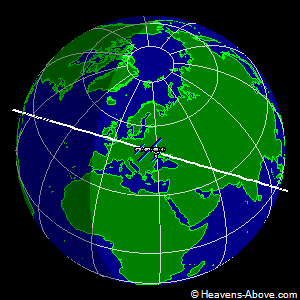 |
| Current position of the ISS |






























 http://www.bbc.co.uk/science/
http://www.bbc.co.uk/science/